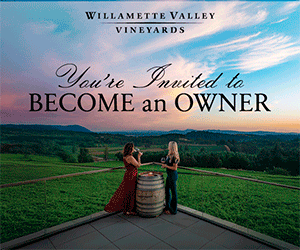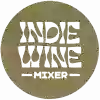Winemaking Secrets
By Eric Weisinger, The Traveling Winemaker
Marlborough, New Zealand—Not long before I left the states for New Zealand, I met a couple reporter friends of mine for lunch. They were writing a story on how winemaking techniques differ around the world and wanted to know more about what I had experienced and seen while working harvests in different countries. Halfway through lunch—and the bottle of wine we were enjoying—they asked what great winemaking secrets had I learned during my travels. It is a question I have been asked more than once over the last few years and one that has always left me at a loss for words.
Historically, winemaking knowledge was passed down from generation to generation. I remember once being in the city of Colmar, in the Alsace region of France. I was there to visit a small family winery located in the middle of the old part of the city. I met with the winemaker, a very fit man in his late ’60s. We spent most of the afternoon tasting his wines, and afterward he asked if I would like a tour of the old cellars. I knew from our conversation that the winery had been in his family for a long time. Exactly how long, though, I did not know.
All our conversation had been in German, and though I can speak enough to get by, I knew that I had missed some of what he had said. The number of wines we tasted that afternoon didn’t help either. As we walked across the cobbled courtyard that separated the tasting room and the winery, I noticed a date carved high above the large wooden doors that were the entrance to the cellar. I asked what the date represented. “Oh, that,” he said. “That was when our family began making wine.” The date was 1549. What secrets did their family hold?
Over lunch, I again pondered this question of winemaking secrets. I thought about the different techniques of winemaking I’ve observed. I thought of the varied ways of handling fruit I have seen, different fermentation methods, barrel programs, adjustments to both juice and wine, as well as countless other stylistic practices. And as I began to try and answer their question, I found myself explaining that I did not think there was any one great secret.
You know, maybe a little trick that would deliver such a golden touch even Midas would envy? Well, if it’s out there, I have not seen it and neither have any other winemakers I know.
That said, there are a few “truths” in winemaking, and if I had to rest my reputation on one of them, I would do so rather comfortably with the vineyard. Yes, there are winemaking practices that are paramount in producing great wine, but without quality grapes, everything else becomes average or less.
Now, in no way am I saying that yeast selection, barrel programs, cap management techniques and other personal winemaking choices are inconsequential. They are, in fact, of great consequence, especially to the winemaker and, ultimately, the consumer.
In both hemispheres, I am seeing a shift in the art of winemaking: a greater focus on vineyard-focused wines. We are entering, or rather coming back to, a time when terroir is the main emphasis.
Now, there are always going to be the mass-produced, mass-marketed wines that regardless of vintage will taste the same as the previous year, and that is fine. There is a place for that. But there is no substitute for great terroir, and it is the goal of many winemakers I have met over the last few years to shepherd that greatness as opposed to trying to make it.
And how does this relate to New Zealand you may be wondering?
Well, one of the regions where I have seen this vineyard-centric attitude growing is Marlborough. With more producers incorporating “green” vineyard
practices as well as less “aggressive” winemaking techniques, what is beginning to appear in these wines is what was there from the beginning: the character and the soul of the land itself.
And it is the character and soul of Marlborough that has been steadily catching the attention of the world. There are some places in this world where the wines being made resonate so strongly with a regional character that they distinguish themselves unquestionably. Marlborough Sauvignon Blanc is such a wine and has established itself firmly in the global wine market.
Marlborough’s Pinot Noir is not far behind, and the swell of interest it is creating across the Pacific is just beginning to make waves with such labels as Auntsfield, Clayridge, Mahi and Pyramid Valley.
What? You have not heard of them yet? Wait. You will.
So, what about the great winemaking secrets? Well, as I finally told my friend at the end of lunch, “Give me another 20 years, and let’s have lunch again.”
You can keep up with Eric’s traveling wine adventures at: www.thetravelingwinemaker.blogspot.com .












